The utility of hydrogen/deuterium exchange mass spectrometry in biopharmaceutical comparability studies
- PMID: 21491437
- PMCID: PMC3164548
- DOI: 10.1002/jps.22432
The utility of hydrogen/deuterium exchange mass spectrometry in biopharmaceutical comparability studies
Abstract
The function, efficacy, and safety of protein biopharmaceuticals are tied to their three-dimensional structure. The analysis and verification of this higher-order structure are critical in demonstrating manufacturing consistency and in establishing the absence of structural changes in response to changes in production. It is, therefore, essential to have reliable, high-resolution and high sensitivity biophysical tools capable of interrogating protein structure and conformation. Here, we demonstrate the use of hydrogen/deuterium exchange mass spectrometry (H/DX-MS) in biopharmaceutical comparability studies. H/DX-MS measurements can be conducted with good precision, consume only picomoles of protein, interrogate nearly the entire molecule with peptide level resolution, and can be completed in a few days. Structural comparability or lack of comparability was monitored for different preparations of interferon-β-1a. We present specific graphical formats for the display of H/DX-MS data that aid in rapidly making both the qualitative (visual) and quantitative assessment of comparability. H/DX-MS is capable of making significant contributions in biopharmaceutical characterization by providing more informative and confidant comparability assessments of protein higher-order structures than are currently available within the biopharmaceutical industry.
Copyright © 2010 Wiley-Liss, Inc.
Figures

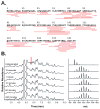
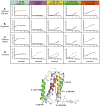
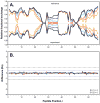
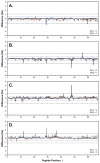

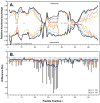
Similar articles
-
[Utilization of Hydrogen/Deuterium Exchange in Biopharmaceutical Industry].Klin Onkol. 2016 Fall;29 Suppl 4(Suppl 4):59-63. Klin Onkol. 2016. PMID: 27846722 Review. Czech.
-
Characterization of IgG1 conformation and conformational dynamics by hydrogen/deuterium exchange mass spectrometry.Anal Chem. 2009 Apr 1;81(7):2644-51. doi: 10.1021/ac802575y. Anal Chem. 2009. PMID: 19265386 Free PMC article.
-
Top-down mass spectrometry and hydrogen/deuterium exchange for comprehensive structural characterization of interferons: implications for biosimilars.Proteomics. 2014 May;14(10):1249-58. doi: 10.1002/pmic.201300341. Epub 2014 Apr 10. Proteomics. 2014. PMID: 24574185
-
Hydrogen deuterium exchange mass spectrometry in biopharmaceutical discovery and development - A review.Anal Chim Acta. 2016 Oct 12;940:8-20. doi: 10.1016/j.aca.2016.08.006. Epub 2016 Aug 9. Anal Chim Acta. 2016. PMID: 27662755 Review.
-
Getting to the core of protein pharmaceuticals--Comprehensive structure analysis by mass spectrometry.Eur J Pharm Biopharm. 2015 Jun;93:95-109. doi: 10.1016/j.ejpb.2015.03.012. Epub 2015 Mar 17. Eur J Pharm Biopharm. 2015. PMID: 25791210 Review.
Cited by
-
Ligand binding and conformational dynamics of the E. coli nicotinamide nucleotide transhydrogenase revealed by hydrogen/deuterium exchange mass spectrometry.Comput Struct Biotechnol J. 2022 Sep 26;20:5430-5439. doi: 10.1016/j.csbj.2022.09.036. eCollection 2022. Comput Struct Biotechnol J. 2022. PMID: 36212541 Free PMC article.
-
Hydrogen-deuterium exchange mass spectrometry identifies spatially distinct antibody epitopes on domain III of the Zika virus envelope protein.J Mass Spectrom. 2021 Jan;56(1):e4685. doi: 10.1002/jms.4685. Epub 2020 Nov 16. J Mass Spectrom. 2021. PMID: 36101787 Free PMC article.
-
Analytical tools for characterizing biopharmaceuticals and the implications for biosimilars.Nat Rev Drug Discov. 2012 Jun 29;11(7):527-40. doi: 10.1038/nrd3746. Nat Rev Drug Discov. 2012. PMID: 22743980 Free PMC article. Review.
-
Conformational analysis of recombinant monoclonal antibodies with hydrogen/deuterium exchange mass spectrometry.Methods Mol Biol. 2013;988:269-89. doi: 10.1007/978-1-62703-327-5_17. Methods Mol Biol. 2013. PMID: 23475726 Free PMC article.
-
MEMHDX: an interactive tool to expedite the statistical validation and visualization of large HDX-MS datasets.Bioinformatics. 2016 Nov 15;32(22):3413-3419. doi: 10.1093/bioinformatics/btw420. Epub 2016 Jul 13. Bioinformatics. 2016. PMID: 27412089 Free PMC article.
References
-
- Lundblad RL. Approaches to the Conformational Analysis of Biopharmaceuticals. Boca Raton, FL: Chapman & Hall/CRC Press; 2009. Dec 15, p. 336.
-
- Rader RA. (Re)defining biopharmaceutical. Nat Biotechnol. 2008;26(7):743–751. - PubMed
-
- Zuñiga L, Calvo B. Biosimilars approval process. Regul Toxicol Pharmacol. 2010;56(3):374–377. - PubMed
-
- Schellekens H, Moors E. Clinical comparability and European biosimilar regulations. Nat Biotechnol. 2010;28(1):28–31. - PubMed
-
- ICH Q5E guidelines. http://www.ich.org/LOB/media/MEDIA1196.pdf.
Publication types
MeSH terms
Substances
Grants and funding
LinkOut - more resources
Full Text Sources
Other Literature Sources

